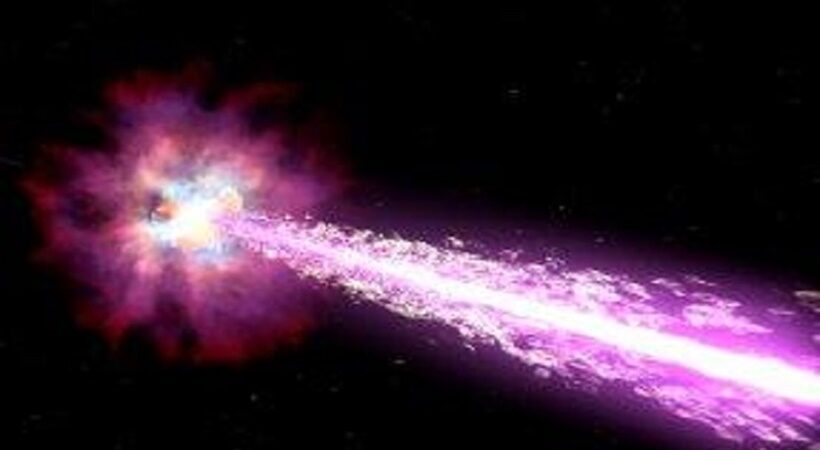A group of astronomers, including some from India, has detected a mighty, short burst of high-energy radiation lasting for about a second. A statement by the Ministry of Science & Technology recently confirmed that the radiation had been racing towards the earth for nearly half the universe’s present age.
The burst, which was detected by NASA’s Fermi Gamma-ray Space Telescope on August 26, 2020, turned out to be one for the record books — the shortest gamma-ray burst (GRB) caused by the death of a massive star, the statement said.
Detectable across billions of light-years, GRBs are known to be the most powerful events in the universe. Astronomers classify them as long or short based on whether the event lasts for more than two seconds or less. While long bursts are observed in association with the demise of massive stars, short bursts have links to a completely different scenario.
This short event GRB was identified by various scientists worldwide, including Shashi Bhushan Pandey from Aryabhatta Research Institute of Observational Sciences (ARIES), an institute of the Department of Science and Technology (DST), and also scientists from other Indian institutions. The identification revealed for the first time that short bursts could be produced by a dying star too.
From India, the Inter-University Centre for Astronomy and Astrophysics, Pune (IUCAA), National Centre for Radio Astrophysics – Tata Institute of Fundamental Research, Pune (NCRA), and IIT Mumbai participated in this work.
“We already knew some GRBs from massive stars could register as short GRBs, but we thought this was due to instrumental limitations. Now we know dying stars can produce short bursts, too,” Bin-bin Zhang was quoted as saying at Nanjing University in China and the University of Nevada, Las Vegas.
“Such a discovery has helped to resolve the long-standing issues related to gamma-ray bursts. Also, this study triggers to re-analyse all such known events to constrain number densities better,” Pandey said.
The burst, named GRB 200826A, is subject to two papers published in the Nature Astronomy on July 26 — one led by Zhang and the other by Tomás Ahumada, a doctoral student at the University of Maryland, College Park, and NASA’s Goddard Space Flight Center in Greenbelt, Maryland.
“We think this event was effectively a fizzle, one that was close to not happening at all,” Ahumada said. “Even so, the burst emitted 14 million times the energy released by the entire Milky Way galaxy over the same amount of time, making it one of the most energetic short-duration GRBs ever seen.”
GRB 200826A, a sharp blast of high-energy emission that lasted only 0.65 seconds, travelled for aeons through the universe. The signal then stretched out to just about one second long after Fermi’s Gamma-ray Burst Monitor detected it.
The researchers said that collapsing stars that produce short GRBs must be cases whose light-speed jets sway on the margin of failure and success. Most massive stars die without producing GRBs and jets at all.
The statement concluded that the result proves that a burst’s radiation alone does not indicate its origin.



















